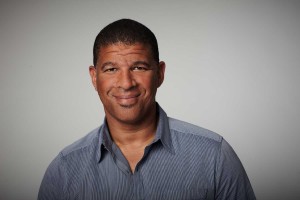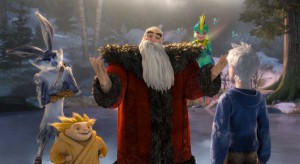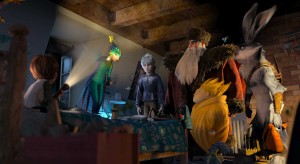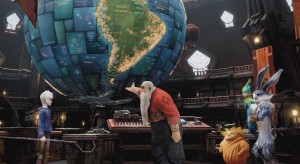
Forming the core themes of the story, the sense of wonder, dreams and hopes are fundamental values that touch the hearts of both children and adults. “In the story the big idea is that we are taking the belief in these characters seriously,” said Ramsey. “We really wanted to sell the idea that they were real, that they lived in real places and that these places were someplace you could get to in the world. That is the big reason we pushed so hard to make the movie look as textured and detailed as it does. We really wanted to put the audience in the world.” The fantasy-adventure uses both 3D and complex visual effects to successfully support the epic story.

To take the vision for the film from painted art to the degree of reality that would draw the audience into the movie, Ramsey talked a lot about how to make the light feel real with the head of visual effects, David Prescott. By taking the latest technology a step further, the filmmakers made groundbreaking strides in the way they dealt with lighting skin. “There is a new skin shader that David brought to the film and developed which mimics the look of real skin because it works like real skin,” Ramsey explained. “It has several layers that the light penetrates through, so we could get a translucency in some of the skin. The light would bounce off it in different ways.”

While Hanenberger oversaw every single aspect of the art department – concept, surfacing, modeling, animation, and more – art director Max Boas, was more focused on the look and tone of individual scenes. The Guardians were differentiated by their color palettes, which were inspired by traditional turn-of-the century children’s book illustrations done in pencil and watercolor. These particular hues evoked a feeling of nostalgia. “Max is a great painter and a fantastic visual artist. He was able to work on a color palette of a scene, the lighting quality,” said Ramsey. “He would do things based on the discussions that Patrick and Roger and I would have about what the colors would be like in this scene; what is the light at this time of day; what is the emotion of the scene? Max would go off and produce beautiful illustrations that captured the feel. We would use those as the basis for the actual lighting.”

So many people contributed to the film that it is hard to single out anyone, but Ramsey – a storyboard artist on live-action films such as The Hulk and Independence Day before he came to animation, and a head of story himself on Monsters vs Aliens – wanted to highlight the work of his team of story artists, and in particular, head of story, Hamish Grieve. “He led our team, and he was a full creative partner on the movie. He was in all of the story discussions, all of the script discussions. He was a lead voice in shaping the story. He was a great head of story.”
The film was built version by version over the course of production. The titanic job to organize the film, keep the editorial schedule and cut and revise all the reiterated versions, fell to editor Joyce Arrastia and DreamWorks veteran, Mike Andrews. “The first version is done in storyboards, that aren’t really animated, but are generally black and white drawings with sound behind them. If we have the actors’ voices, we plug those in, but for the most part it is scratch dialogue. It can be me playing Santa and someone playing the Tooth Fairy, and we’d all be performing the dialogue as we go,” explained Ramsey. “There is music in it, a temp score that we select together that our editor slaps in. We put together our quickie, temporary version of sound effects and a sound mix and plug it into our cut. We screen it to see how it works.”

This all occurred even before the sound designer, in this case Oscar-winner Richard King, came on board. The temporary mix served as a way for the filmmakers to convey basic audio ideas. “But then he’ll take off and suggest other things, stretch things out and come up with totally new ideas,” Ramsey explained. “Obviously, it’s like we’re driving a little Toyota Prius and he’s driving a Lamborghini. It’s a whole different magnitude of expertise that he brings. We give him a rough sketch, and he provides us with a finished painting.”
Rise of the Guardians has much more music than the average live-action film. Multiple Academy-award nominee Alexander Desplat was the only composer the team had in mind. “I can barely believe we got him on the film,” revealed Ramsey. “His resume and work are so impressive. He brought his all to this movie. Something about it really charmed him and he entered into the spirit of it.”
The three-year process required open and direct communication between all departments to accomplish a project with the complexity and detail of Rise of the Guardians. Ramsey’s biggest goal in the collaboration was to make sure that “the crew was engaged and fully involved” because “every department had something to share and contribute.”
The director loves the whole process of creating an animated film – conceptualizing, throwing around ideas in the design process, the “blue sky” period when things start to take shape – but two areas are special. After living through two years of rough sketches and paintings, his favorite moments are when he starts seeing finished animation and then when the lighting is added. “Every time I see the animation, I am more and more blown away with what they achieved,” said Ramsey, who credits head of the animation department, Gab Hordos, with selecting the best animators for the film.
“Directing the animation is really, really fun, because it starts to come alive. You have incredible sets, and everything else, but when those characters come alive and live and express all these ideas that you’ve been working on for literally a year, year-and-a-half before, it’s pretty overwhelming,” Ramsey exclaimed. “And then when you start seeing lighting, that’s like the final coat of paint being put on. Everything becomes what it was meant to be. It’s stunning to finally see those things up on screen.”





